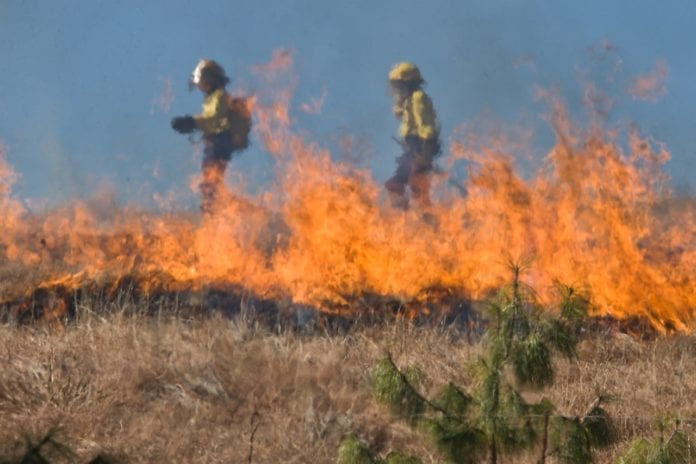While it has been a slow start to wildfire season (compared to previous years) thanks to a cool and rainy spring, BC Wildfire Service warns there are signs that the end of July and August may be warmer than usual.
According to Matt MacDonald, lead forecaster for the BC Wildfire Service, wet weather is expected throughout the month of June, but warmer-than-normal temperatures are expected in late July and will continue through August.
The province revealed the preliminary wildfire forecast Friday morning, stating they’re thankful this spring has brought mild weather as opposed to last year’s record-setting heat.
So far this year, there have been 137 wildfire reported, burning about 600 hectares, well below annual averages for this time of year— that’s about 60% less fire than the five-year average of fires in May.
From June 25th to July 1st 2021, unforgiving heat, now known as the heat dome, had devastating effects all around BC.
During that period, Island Health reported that double the amount of deaths were recorded than what was typically seen during the week in the previous five years.
According to data released by the BC Coroners Service back in November, record-breaking temperatures last summer resulted in the deaths of 595 British Columbians.
At least 526 deaths occurred during the first heat wave in June, with the others taking place in the days and weeks following the record breaking temperatures.
97 of those deaths occurred on Vancouver Island. The five-year average is 41.6 deaths over the same seven-day period.
Sixty nine percent of deaths recorded in the province were aged seventy or older. No heat-related deaths were recorded among children.
During the heat wave, Victoria hit a new record of 38.6 C from an old record of 27.8 set in 1951.
Lytton broke the record for the hottest temperature ever recorded in Canada, hitting a scorching 49.6 C on Tuesday, June 29th.
During this time, wildfires last year destroyed most the village of Lytton and forced almost 200 evacuation orders during a near-record season where 1,610 wildfires charred 8,682 square kilometres of land, mostly in southern and southeastern BC.
So far this year, there have been about 3,000 lightning strikes recorded in BC. The 10-year average for May is 16,000 lightning strikes.
MacDonald said it’s too early to predict extreme weather events such as the heat dome that settled over BC last year but is usually observable about two weeks ahead of time.
Forests Minister Katrine Conroy said BC is ready for wildfire season but is pleased with the June outlook.
Following last year’s devastating temperatures, emphasized the work that has been done to transition the B.C. Wildfire Service from a seasonal service to a year-round one, as well as $359 million in new funding announced in the 2022 budget to protect British Columbians from wildfires.
The BC Wildfire Service is also introducing new measures to cope with wildfires this year. They’re introducing e-transfers as a way evacuees can receive support money, and have a new wildfire reporting app where users can upload images of fires they see.



